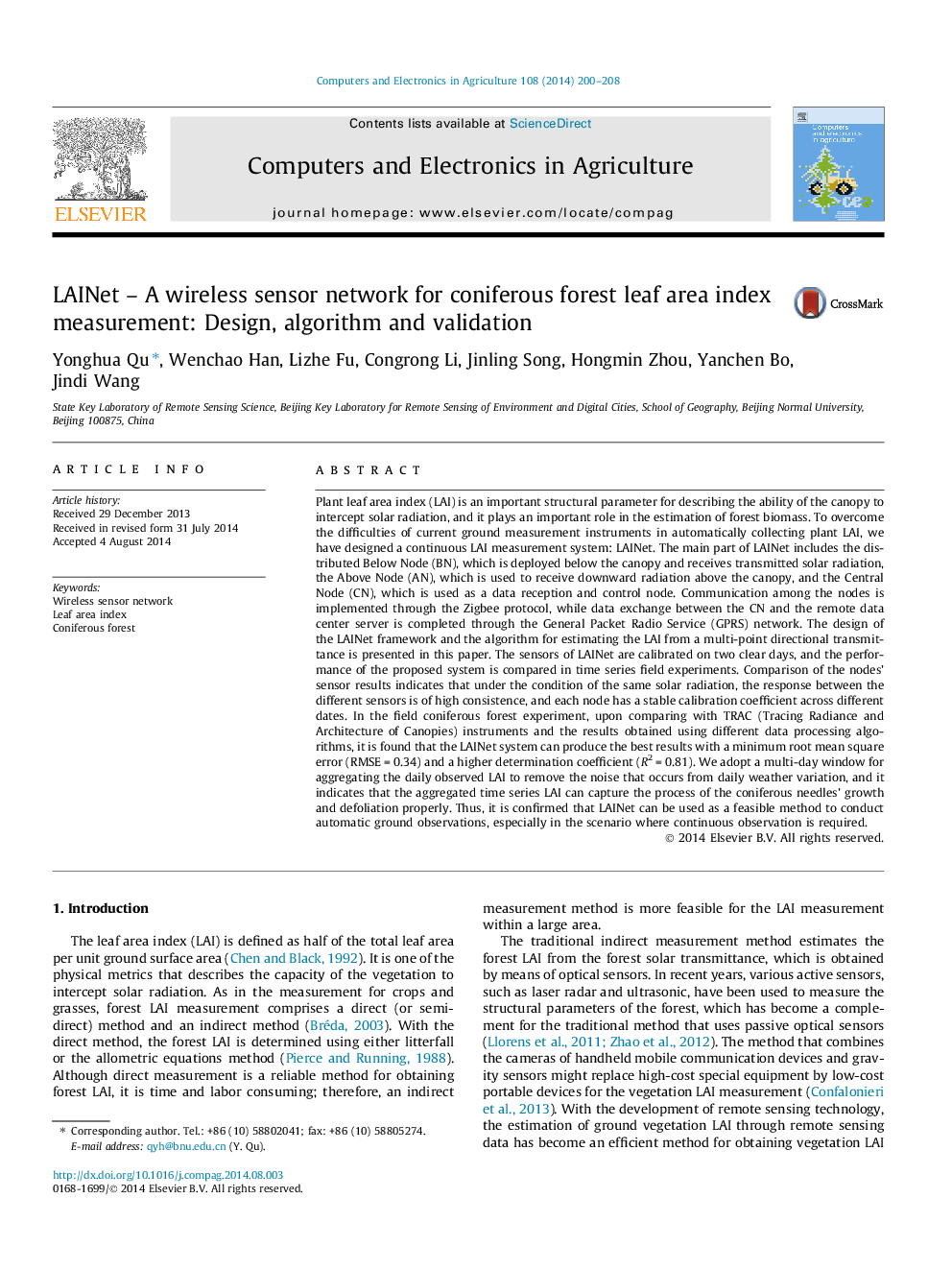| Article ID | Journal | Published Year | Pages | File Type |
|---|---|---|---|---|
| 84275 | Computers and Electronics in Agriculture | 2014 | 9 Pages |
•LAINet, an instrument for measuring coniferous leaf area index was implemented.•The hardware design and leaf area index estimation algorithm was presented.•LAINet produced high consistency measurements with a commercial instrument-TRAC.•LAINet was promising on measuring temporal leaf area index automatically.
Plant leaf area index (LAI) is an important structural parameter for describing the ability of the canopy to intercept solar radiation, and it plays an important role in the estimation of forest biomass. To overcome the difficulties of current ground measurement instruments in automatically collecting plant LAI, we have designed a continuous LAI measurement system: LAINet. The main part of LAINet includes the distributed Below Node (BN), which is deployed below the canopy and receives transmitted solar radiation, the Above Node (AN), which is used to receive downward radiation above the canopy, and the Central Node (CN), which is used as a data reception and control node. Communication among the nodes is implemented through the Zigbee protocol, while data exchange between the CN and the remote data center server is completed through the General Packet Radio Service (GPRS) network. The design of the LAINet framework and the algorithm for estimating the LAI from a multi-point directional transmittance is presented in this paper. The sensors of LAINet are calibrated on two clear days, and the performance of the proposed system is compared in time series field experiments. Comparison of the nodes’ sensor results indicates that under the condition of the same solar radiation, the response between the different sensors is of high consistence, and each node has a stable calibration coefficient across different dates. In the field coniferous forest experiment, upon comparing with TRAC (Tracing Radiance and Architecture of Canopies) instruments and the results obtained using different data processing algorithms, it is found that the LAINet system can produce the best results with a minimum root mean square error (RMSE = 0.34) and a higher determination coefficient (R2 = 0.81). We adopt a multi-day window for aggregating the daily observed LAI to remove the noise that occurs from daily weather variation, and it indicates that the aggregated time series LAI can capture the process of the coniferous needles’ growth and defoliation properly. Thus, it is confirmed that LAINet can be used as a feasible method to conduct automatic ground observations, especially in the scenario where continuous observation is required.
